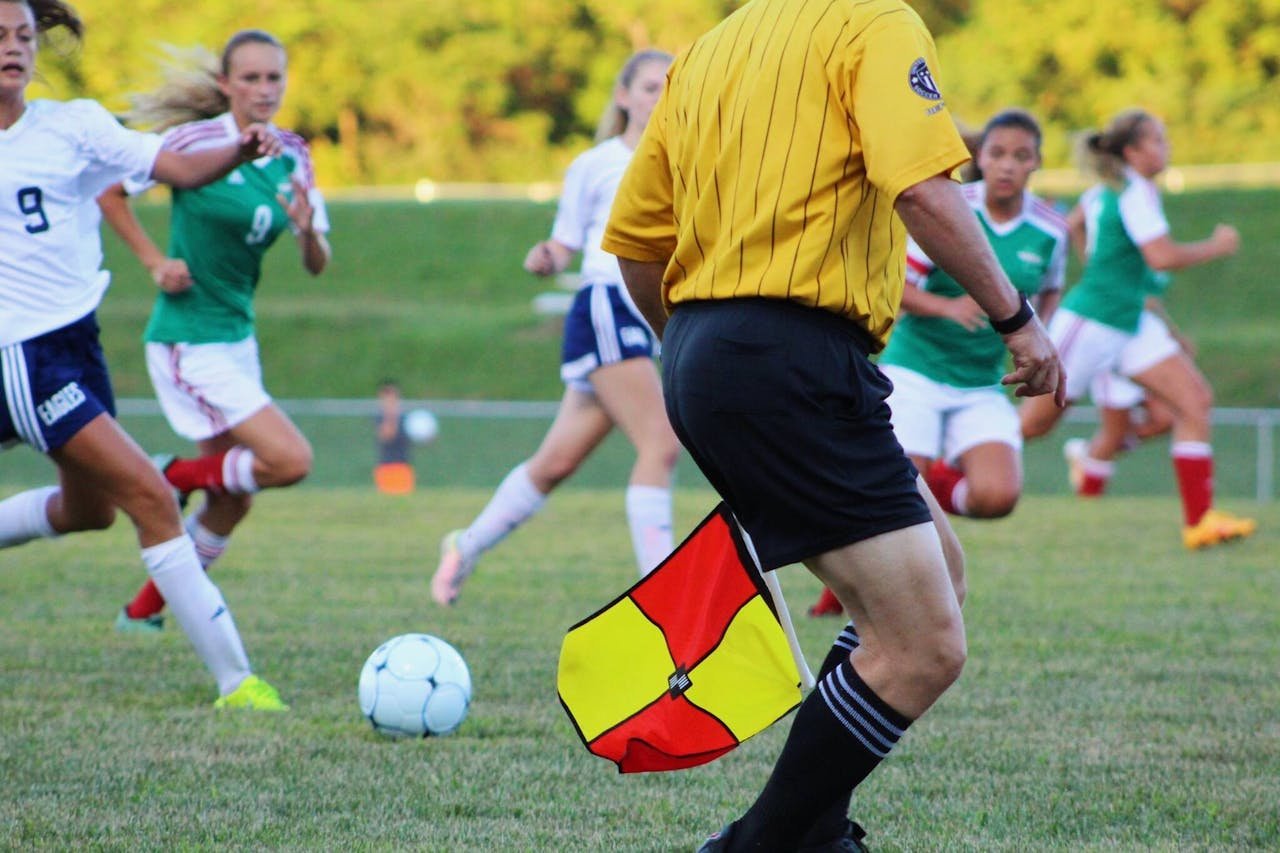If you’re just starting to get into soccer, or even if you’ve been a fan for a while, there’s one rule that tends to cause a lot of confusion: the offside rule. It’s one of the most misunderstood aspects of the game, yet it plays a crucial role in shaping the flow of soccer matches. So, what’s all the fuss about?
The offside rule might sound complicated at first, but don’t worry – it’s not as tough as it seems. In this guide, we’re going to break it down in simple terms, helping you understand when and why a player is offside. By the end, you’ll know exactly how this rule works and why it’s so important to the game.
So, whether you’re a beginner who wants to get the hang of things, or you’re just looking to brush up on your soccer knowledge, this guide has got you covered.
What is the Offside Rule in Soccer?
The offside rule is one of the most fundamental parts of soccer, but it’s often the hardest for new fans to grasp. Simply put, a player is considered offside if they’re in an offside position when the ball is passed to them by a teammate.
Let’s break it down further:
A player is in an offside position if:
They are closer to the opponent’s goal line than both the ball and the second-to-last defender at the moment the ball is passed to them.
They are actively involved in the play, either by receiving the ball, interfering with an opponent, or gaining an advantage from their position.
It’s important to remember that simply being in an offside position isn’t an offense. The offense only happens when the player becomes involved in the play. So, a player can be in an offside position but still not be penalized if they don’t interfere with the game.
Why is the Offside Rule Important?
The offside rule is there to prevent attacking players from gaining an unfair advantage. Without it, players could hang around the opponent’s goal all day, waiting for an easy pass to score. This would make the game much less challenging and strategic.
By enforcing the offside rule, teams are encouraged to work together in defense, maintaining structure and discipline. It also forces attackers to time their runs carefully, adding a layer of strategy to the game.
Helpful Hint:
If you’re ever unsure whether a player is offside or not, watch the defenders and keep an eye on their positioning. The key is where the attacker is in relation to the second-to-last defender when the ball is played. If they’re ahead of that defender, it’s offside!
Understanding Offside in Different Scenarios
Sometimes, the offside rule can be tricky because it depends on different situations. Here are a few examples of when a player might be called offside:
1. When a Player Receives a Pass
This is the most common situation where a player is offside. If the ball is passed to a player who is closer to the opponent’s goal than both the ball and the second-to-last defender, then they are offside. The key is when the ball is played, not when the player receives it.
For example, let’s say a player is near the opponent’s goal but is behind the defenders when the ball is passed. They’re onside. But if they’re ahead of the defenders when the pass is made, they are offside.
2. A Player is Active in the Play
Being in an offside position alone isn’t enough to get penalized. A player must be actively involved in the play. For example, if the player is not receiving the ball or interfering with an opponent, they are not considered offside, even if they are ahead of the second-to-last defender.
In other words, a player standing in an offside position but not touching the ball or blocking an opponent’s view is not penalized.
3. When a Player is Not Involved in the Play
If a player is in an offside position but does not affect the game, they’re not penalized. For example, if a player is in an offside position but is standing far from the action and not interfering with the play in any way, the referee will allow the game to continue.
However, if the player in the offside position starts running toward the ball or interferes with an opponent, the referee will call them offside.
Offside in Set Pieces: Corner Kicks and Throw-ins
The offside rule does not apply during certain situations like corner kicks and throw-ins. In these cases, players cannot be offside, even if they’re closer to the opponent’s goal than the ball or defenders. This is one area where the offside rule gets a little more relaxed.
So, if the ball is crossed into the box from a corner kick, players can position themselves as they wish, regardless of their proximity to the goal line, and still remain onside.
Helpful Hint:
If you’re a player or coach, always keep an eye on set-piece situations like corners and throw-ins. While the offside rule doesn’t apply, defenders should still be alert to avoid easy goals.
The Role of the Assistant Referee (Linesman)
The assistant referees, or linesmen, play a crucial role in enforcing the offside rule. Positioned along the sideline, they keep track of the attacking players’ positions relative to the defenders.
When the ball is passed to an attacking player, the linesman watches closely to see if the player is in an offside position. If the player is offside, the linesman raises their flag, signaling to the referee that an offense has occurred.
The linesman’s job is tough, requiring quick judgment and perfect timing. They must watch the players closely and make sure they’re positioned properly when the ball is played.
Stats:
Did you know that assistant referees make an average of 20 to 30 offside calls per match in top-tier leagues? Their ability to make quick and accurate decisions can make a huge difference in the outcome of a game.
Common Offside Misconceptions
There are a few misconceptions about the offside rule that confuse both beginners and seasoned fans alike. Let’s clear these up:
1. “A Player is Offside if They’re Just Near the Goal”
This is a common misunderstanding. A player is only offside if they are closer to the goal than both the ball and the second-to-last defender when the ball is passed. Simply standing near the opponent’s goal is not enough to be offside.
2. “A Player Can Be Offside on Their Own Half”
This is another misconception. The offside rule only applies in the attacking half of the field. A player cannot be offside in their own half, no matter where they are positioned.
3. “A Player is Offside if They’re Past the Last Defender”
This one is tricky because it’s not just about being ahead of the last defender. A player is only offside if they are beyond the second-to-last defender when the ball is played. This means the goalkeeper, usually being the last line of defense, doesn’t always count as the “last” defender.
Frequently Asked Questions
Wrapping Up
The offside rule is one of the most important—and sometimes confusing—rules in soccer. It keeps the game fair by preventing attackers from simply waiting near the goal for an easy pass. Understanding when a player is offside and when they’re not can help players, coaches, and fans appreciate the game even more.
While the rule might seem tricky at first, breaking it down into simple parts makes it easier to grasp. Always remember that an offside position alone isn’t an offense—there must be active involvement in play. Assistant referees and VAR are there to make the calls, but understanding the rule yourself can help you follow matches with more confidence.
So next time you watch a game, keep an eye on the positioning of attackers and defenders. With a little practice, you’ll be spotting offside calls like a pro!





